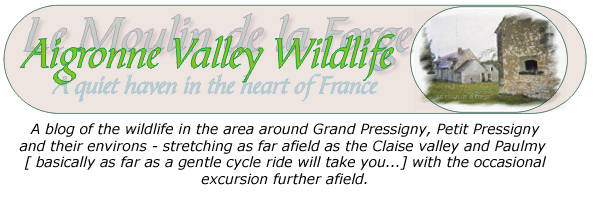On the D750 between Barrou and Descartes is the Sablière Bergeresse, a sand and gravel quarry currently undergoing "environmental improvements" on the boundary of La Guerche and Abilly. That is not the subject of this post. Just two fields along in the Descartes direction, on Sunday we saw a blue field. I thought at first sight it was linseed, but then realised it was a rape (colza) crop blued from end to end with cornflowers (centaurea cyanus, bleuet des champs). It's spectacular - worth a special trip just to see it.
Le pliage
-
The folding. That's what they call bending the single grape vine cane
that's left after pruning to the horizontal and attaching it to a guide
wire. And t...













3 comments:
It does look lovely and with a sand and gravel pit nearby it must be a great place to find all sorts of bees. Amelia
How do you think the cornflowers got there?
Cornflowers were once a common weed of cornfields all over Europe. Nowadays farmers can eliminate them from cereal crops using selective herbicides that don't kill members of the family of grasses (wheat, etc). But there is what is known as the fossil seed bank = a reservoir of seeds buried in the soil that can germinate after many years given the right conditions. Maybe this farmer had a new plough which went a little deeper, maybe it was the wet. The selective herbicides can't be used on rape, becaue it's not a grass, so they would kill it along with the weeds. Some farmers are choosing to reduce their agrochemical interventions to a minimum, anyway, and cornflowers don't do any harm to the crop. The cornflowers have always been there, but this year they were on top form.
Post a Comment